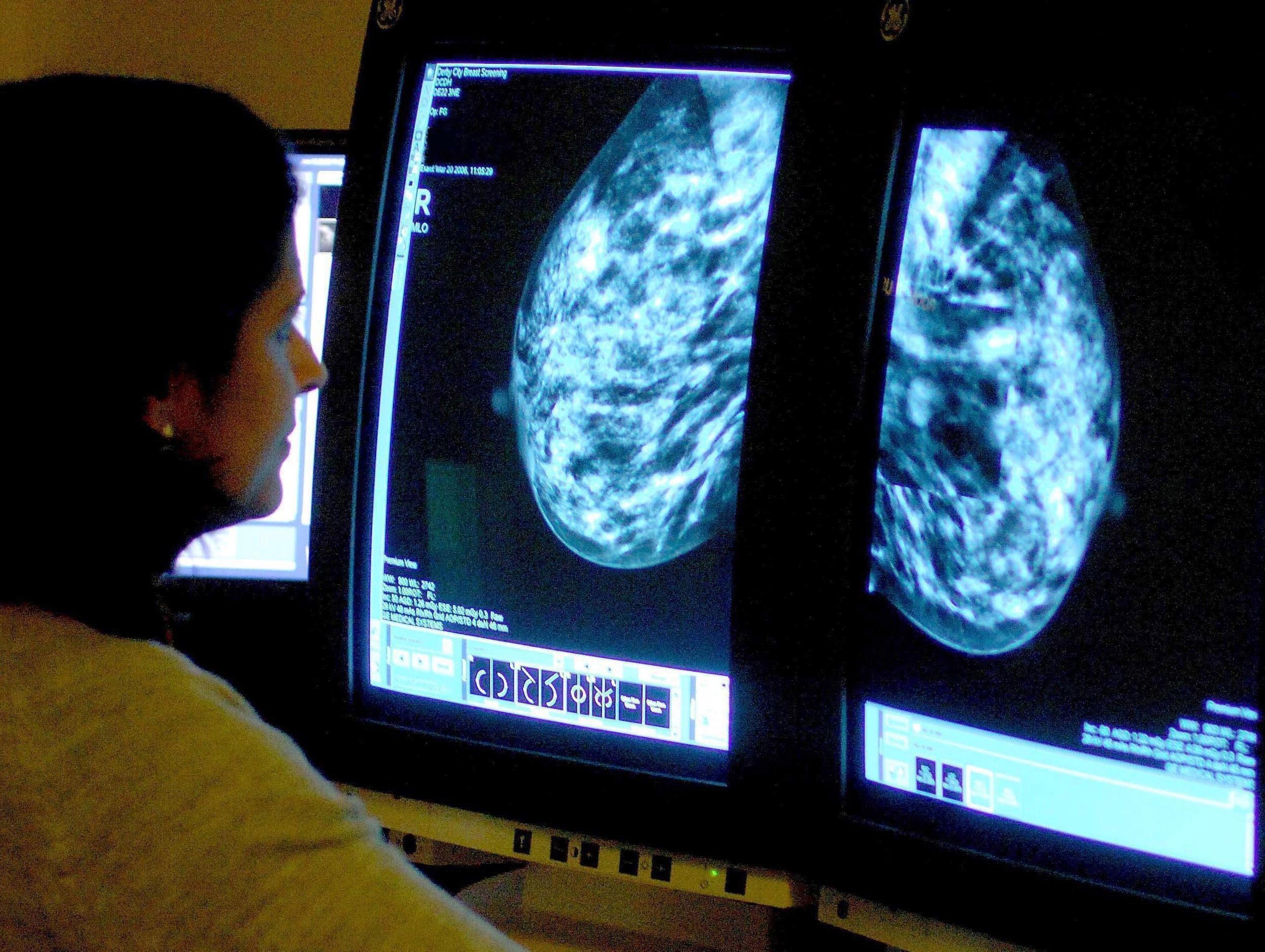The Independent's journalism is supported by our readers. When you purchase through links on our site, we may earn commission.
Breast cancer treatment 'holy grail' within reach after breakthrough, scientists claim
Researchers identify cells that are likely to become cancerous and a drug that appears to stop this happening

Scientists believe they may have found a way to create the “holy grail” of breast cancer research after an existing drug appeared to delay or even prevent tumours from forming in women with a particularly high risk of the disease.
Many women who have the BRCA1 genetic mutation – including the actress Angelina Jolie -- decide to have their breasts surgically removed because the risk of getting breast cancer is so high.
However, there is now hope that a drug could provide an alternative form of treatment.
Using samples of breast tissue donated by women with the faulty BRCA1 gene, researchers in Australia discovered cells in apparently healthy women that have a high chance of developing into cancer. They then used a drug designed to treat bone cancer and osteoporosis to try to stop these cells from growing.
Their results, published in the journal Nature Medicine, prompted them to speak of their excitement at the drugs’ potential. A clinical trial of the drug in patients – rather than in breast tissue – is already underway.
One of the researchers, Professor Jane Visvader of the Walter and Eliza Hall Institute of Medical Research in Melbourne, said the discovery was based on about 10 years of research into stem cells in the breast.
“By thoroughly dissecting how normal breast tissue develops, we have been able to pinpoint the precise cells that are the culprits in cancer formation,” she said. “It is very exciting to think that we may be on the path to the 'holy grail' of cancer research, devising a way to prevent this type of breast cancer in women at high genetic risk.”
Her colleague, Professor Geoff Lindeman, a medical oncologist at The Royal Melbourne Hospital, stressed they still needed to establish whether the drug would show similar results when given to women with the condition.
“In our pre-clinical models [the tissue samples], we were able to show we could either delay or prevent tumours from forming,” he said.
“We’re very excited by these findings because it means that we have found a strategy that might be useful to prevent breast cancer for very high-risk women, particularly BRCA1 mutation carriers.
“What that would require next is testing the hypothesis in the clinic, through clinical trials involving a larger number of women. But our findings to date are very exciting and suggest that would be well worth doing.”
He said that the discovery of how to identify the pre-cancerous cells, using a marker protein called RANK, was itself a significant breakthrough.
Commenting on the study, Professor Peter Barrett-Lee, a consultant clinical oncologist at the Velindre NHS Trust in Wales, said it was "very much a laboratory-based project".
"It is excellent pre-clinical work and identifies the Rank-Ligand as a potential therapeutic target for prevention of breast cancer. Rank-Ligand inhibitors are already in use for patients with osteoporosis and bone metastases from breast cancer so it is very interesting work," he said.
"However, the observations would need to be tested in patients and this possible approach will be quite a few years in the making, even if it works.”
Ms Jolie, whose mother died from cancer, wrote movingly about her decision to have surgery in the New York Times after she was told there was 87 per cent chance she would get the disease.
“I wanted to write this to tell other women that the decision to have a mastectomy was not easy. But it is one I am very happy that I made," she said.
"My chances of developing breast cancer have dropped from 87 per cent to under 5 per cent. I can tell my children that they don’t need to fear they will lose me to breast cancer.
“It is reassuring that they see nothing that makes them uncomfortable. They can see my small scars and that’s it. Everything else is just Mommy, the same as she always was. And they know that I love them and will do anything to be with them as long as I can.
“On a personal note, I do not feel any less of a woman. I feel empowered that I made a strong choice that in no way diminishes my femininity.”
According to the World Health Organisation, breast cancer is the most common type of the disease among women.
More than 508,000 women died from breast cancer in 2011 worldwide, although genetic mutations are thought to account for only a small percentage of cases.
“Early detection in order to improve breast cancer outcome and survival remains the cornerstone of breast cancer control,” the WHO says.
Join our commenting forum
Join thought-provoking conversations, follow other Independent readers and see their replies
Comments
Bookmark popover
Removed from bookmarks